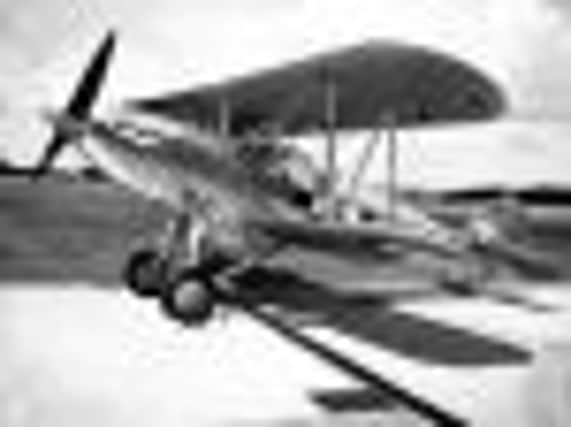Pilot inspired courage and leadership


Frederick Rosier was born in Wrexham in 1915 and entered the RAF on a short service commission in 1935.
After qualifying as a pilot, he joined No 43 Squadron at RAF Tangmere to fly the Hawker Fury. Rosier later described his first two years at Tangmere as ‘carefree – I belonged to one of the most exclusive flying clubs in the world’. His log book for 1936 listed some of the training a pilot undertook; camera gun attacks on other aircraft, instrument and formation flying, cross-country flights, slow flying and spinning, message bag dropping and battle climbs to 25,000 feet.
Advertisement
Hide AdAdvertisement
Hide AdBack on the ground, in the officer’s mess, he was required to wear mess kit (blue waistcoats) at dinner on three nights of the week. One Thursday each month, full mess kit had to be worn and every Friday, dinner jackets.
Tweed jackets were allowed for dinner in the mess on Wednesdays and at the weekend. During his third year at Tangmere, the squadron exchanged its Furies for Hurricanes and prepared for a war that seemed inevitable.
At the outbreak of war, he joined the newly-formed No 229 Squadron at Digby, Lincolnshire. On May 18, 1940, two days after he had arrived in France, Rosier destroyed a Bf 109 before being shot down near Arras.
When he attempted to bale out of his burning Hurricane, his cockpit hood jammed and he only survived because his aircraft exploded and he was thrown out of the wreckage and was able to parachute to safety.
Advertisement
Hide AdAdvertisement
Hide AdBadly burned, he was hospitalised and later repatriated, arriving at Southampton a week later. Three months later, after recovering from his injuries, he rejoined No 229 Squadron as commanding officer and flew in the last few weeks of the Battle of Britain.
PROMOTED TO WING LEADER
In early 1941, the squadron embarked on HMS Furious, from which it flew off to reach North Africa in time to support the capture of Benghazi.
Rosier was soon promoted to command one of Sir Arthur Coningham’s Western Desert fighter wings. As a wing leader he was awarded the DSO, the citation reading: ‘An outstanding fighter pilot whose courage and leadership has been inspiring throughout’.
He next spent a year as second-in-command of No 221 Group, directing all fighter operations up to and including the Battle of El Alamein.
Advertisement
Hide AdAdvertisement
Hide AdIn early 1943, Rosier was back in England and, after staff posts, ended the war on the continent as Group Captain (Operations) of No 84 Group, 2nd Tactical Air Force.
After returning to the UK, Rosier attended the RAF Staff College, then commanded RAF Horsham St Faith, attended the US Armed Forces College in Virginia and undertook a USAF exchange posting.
Further UK staff posts followed and in 1966, as an Air Vice Marshal, he took over as Air Officer Commanding Air Forces Middle East. Rosier next went to Transport Command but in 1961 returned to Fighter Command as its last Commander-in-Chief. His last appointment before retiring from the RAF was as deputy Commander-in-Chief Allied Forces Central Europe. Air Chief Marshal Sir Frederick Rosier GCB CBE DSO died on September 10, 1998, aged 82.
More information on the museum, including opening times and entry prices, can be found at www.tangmere-museum.org.uk